Royal Enfield Super Meteor 650 Review
Review by Kris Hodgson
I’ve just returned from the Super Meteor 650 launch held in Lorne in Victoria and I’ve got to admit, I’m impressed with Royal Enfield’s continued evolution. This latest offering looks like it will make a major impact in the beginner cruiser segment.

There’s not much left available on the new LAMS market in cruisers these days, especially if we’re talking a proper traditionally styled machine as many key players have bowed out of this segment in recent years.
I won’t speculate as to why they’ve gone, but I think this move is a smart one for Royal Enfield. Obviously the Super Meteor sits quite clearly in the LAMS or beginner segment here for us, but it also marks the brand’s first ‘big’ cruiser. This is classified as a big-bore bike in India and many Asian markets.
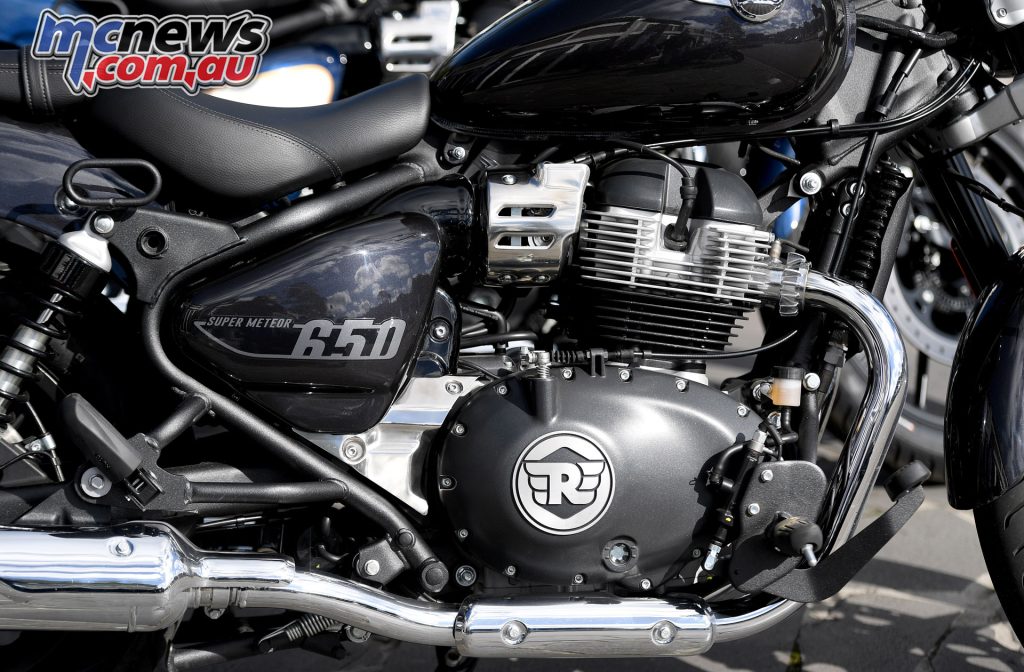
The Super Meteor basically builds on the Thunderbird or Rumbler 350 as we saw it named in Australia, which while a fun little cruiser was maybe not quite enough for most first-time cruiser owners here.
The Super Meteor solves that dilemma by taking their now well established parallel-twin and delivering a beginner to intermediate option that clearly sought to match, if not beat, most of the current and now-gone competition. You’re getting a full size cruiser as a result with most of the lashings you’d expect. However there’s still no move towards a contemporary electronics suite with only basic ABS provided.
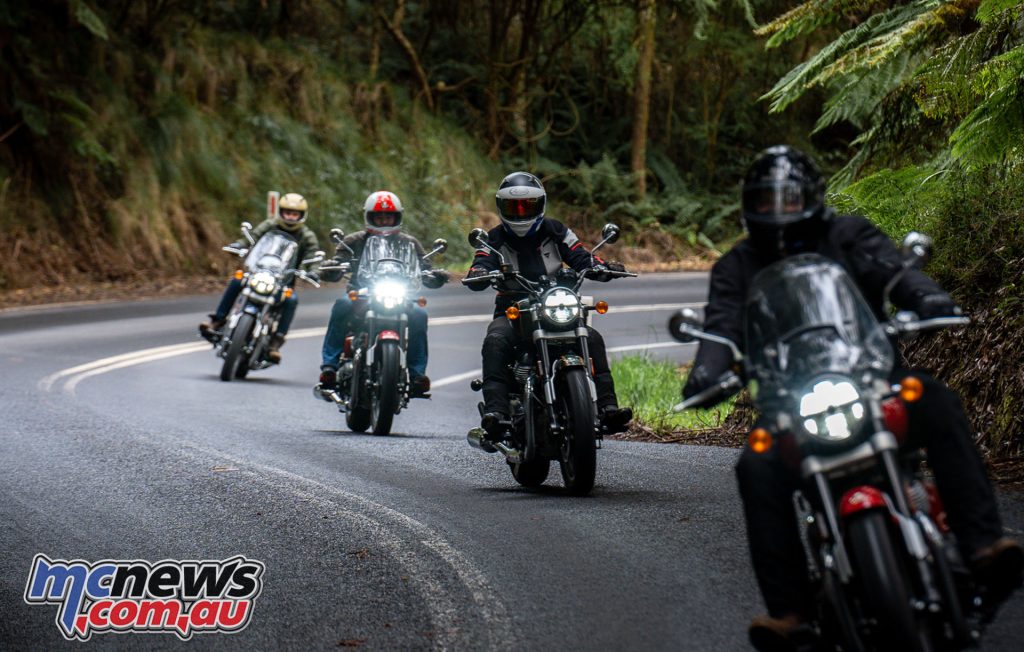
Royal Enfield haven’t revolutionised the beginner cruiser, however there’s no questioning the authenticity, flair and development they are bringing to the table. That engine is a proven unit, however the chassis was a fresh slate.
An afternoon ride out of Lorne with a bunch of Super Meteor mounted journos under overcast skies quickly revealed an inviting machine – one of Royal Enfield’s primary design briefs by their own admission – making good use of the parallel-twin 650, which sits at the top of the allowable power limit for LAMS machines.
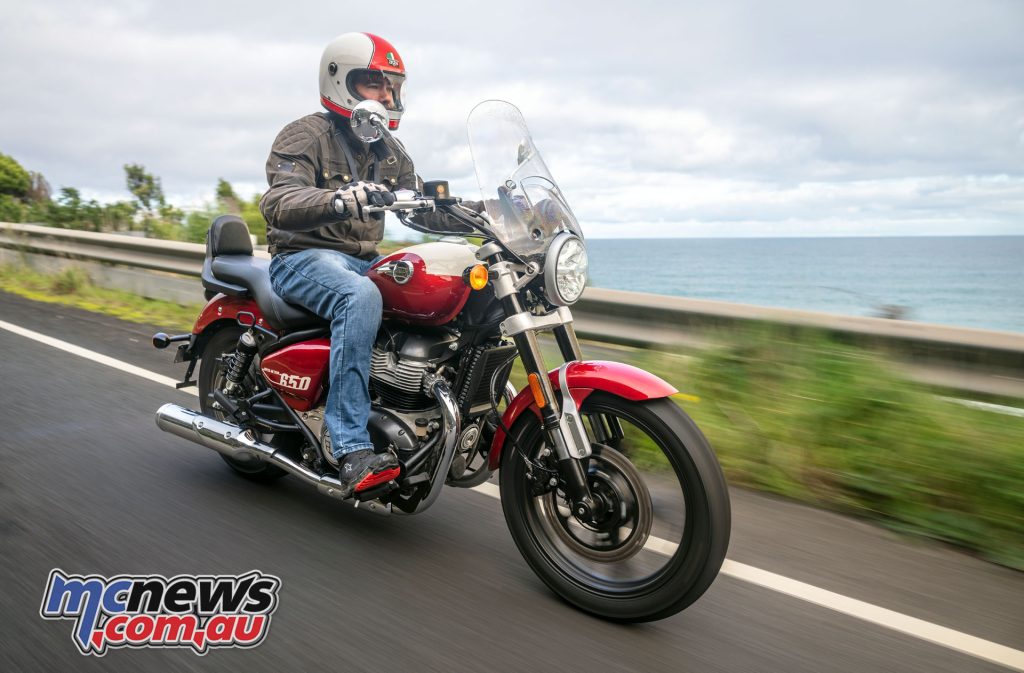
A parallel-twin I hear some groan… yes, but it’s a good thing with a sound track that well emulates a V-twin, and unless I’ve forgotten one, all the competition in this segment are also powered by parallel twins.
A 740 mm low seat height is typically cruiser but not the lowest around,. The sculpted seat is easy to slip into though and there is an easy reach to those forward controls for a nice stretched out seating position. The wide and somewhat tall handlebars are not going to be a stretch for even the smallest of riders.
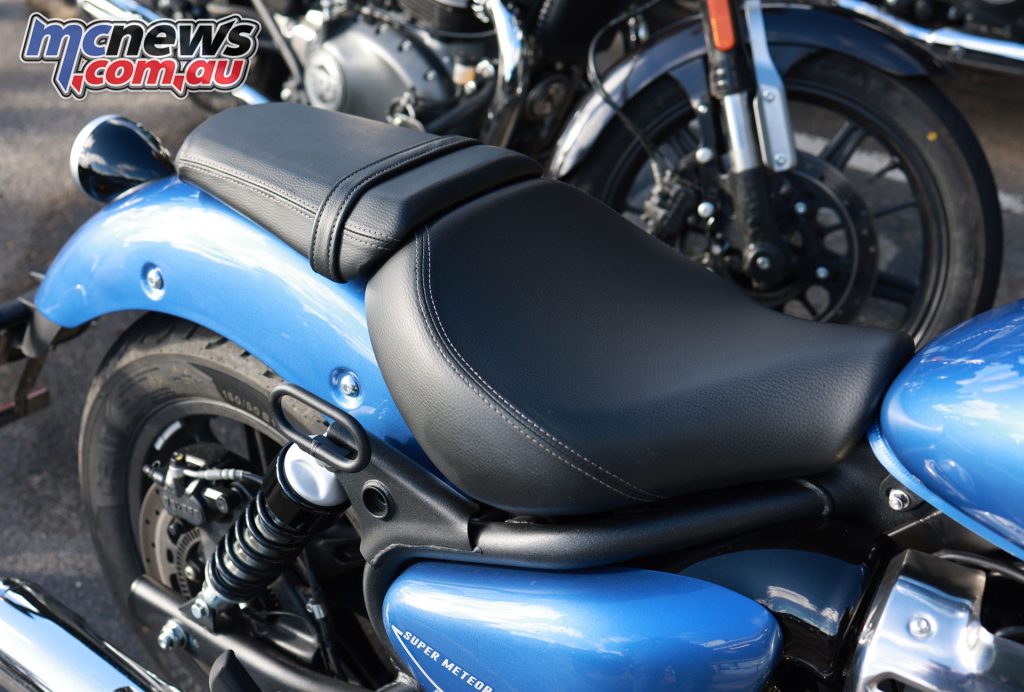
The 240 kg wet weight is normal by cruiser metrics. A low centre of gravity is what make most cruisers so easy to handle at city speeds. Lifting the bike off the side-stand was easy and it is also a hassle free roll off the centre-stand.
For me at 180 cm with a 32-inch inseam, it’s an ideal seating position.Comfortable, relaxed and offering instant confidence as we rolled out of Lorne and down the coast on the base model Super Meteor.
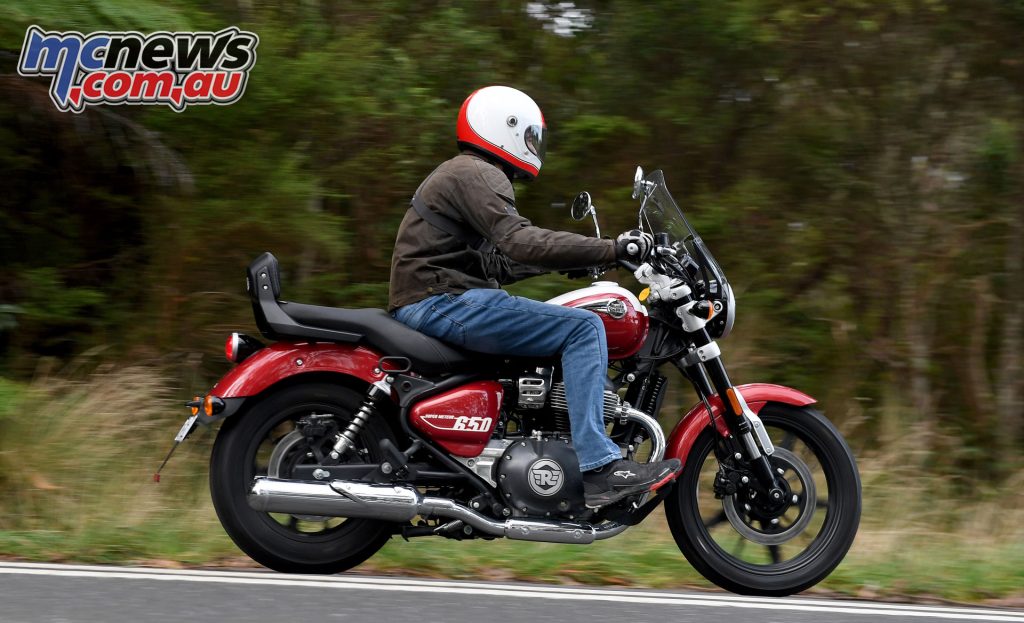
I did experience a little strain across my back in the first 30 minutes or so, but funnily enough that went away shortly after and didn’t bother me again.
Low speed handling is natural, neutral and responsive, which impressed me. I’m not primarily a cruiser rider, so jumping onto one can at times take a bit of reassessment as to how I ride and what the bike wants.
That was hardly the case with the Super Meteor which is an easy handler around town, with good manoeuvrability, aided by those wide bars and light feeling front-end at these slower speeds.
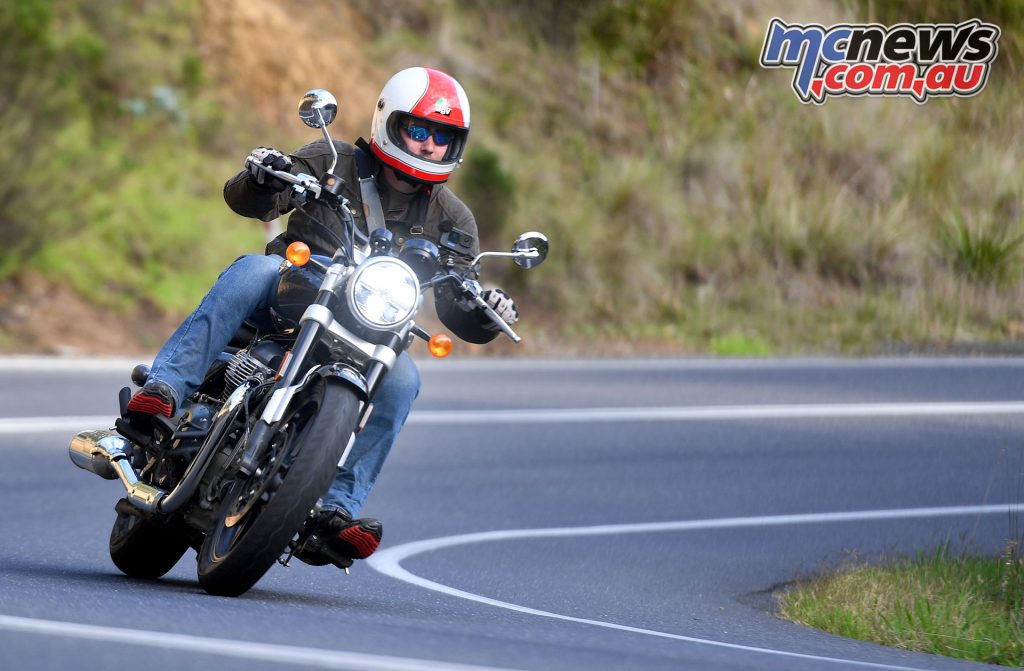
Fuelling is smooth, with good torque from down low and a light clutch making for easy feathering when needed. The Super Meteor lacks a bit of the directness and bite of the 650 nakedbikes, however this is a cruiser and it’s been fuelled and geared to suit.
It wasn’t long before we got into some nice twisties and this is where the bike really comes to life. With a lead rider and photo stops the pace was probably best described as a cruise, however the parallel-twin offers willing power, with a light gearbox and easy shifts, both up and down, matched to smooth engine braking.
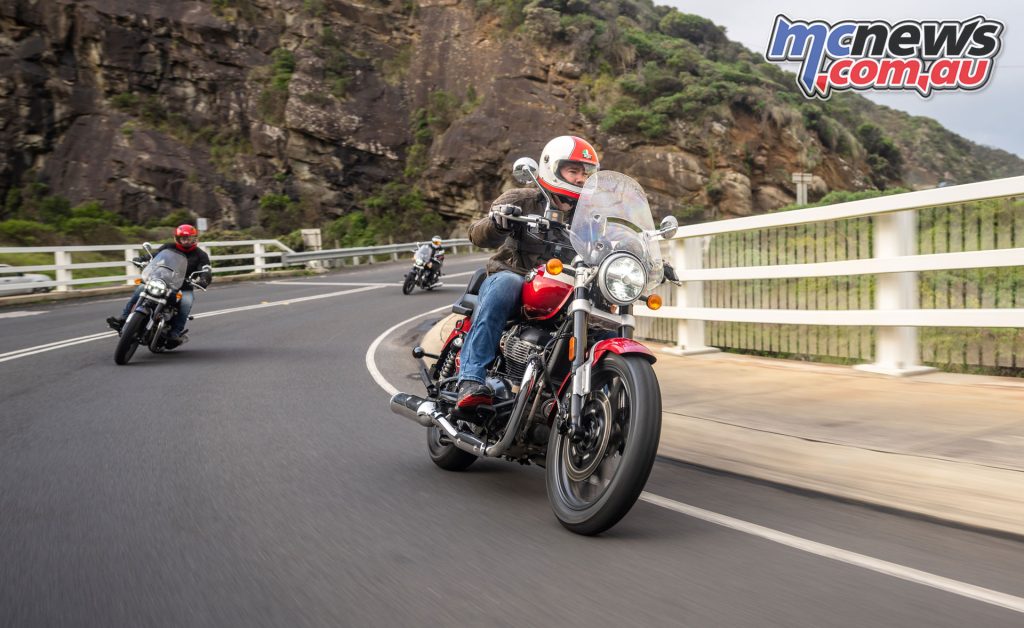
There’s no tacho to keep an eye on, so you’re just running on feel for shifts, however power peaks at 7250 rpm, while max torque – the more important figure – is down at 5650 rpm. You’ll feel that flatten off if you push past the mid-range as a result. Cruisersare rarely known for their top-end but the broad spread of performance here makes it hard to complain about.
Running into the first corner and grabbing some front brake, the performance there is fairly gentle and unassuming. This isn’t that unusual with cruisers, where the rule about the vast majority of your braking performance being at the front, doesn’t apply.
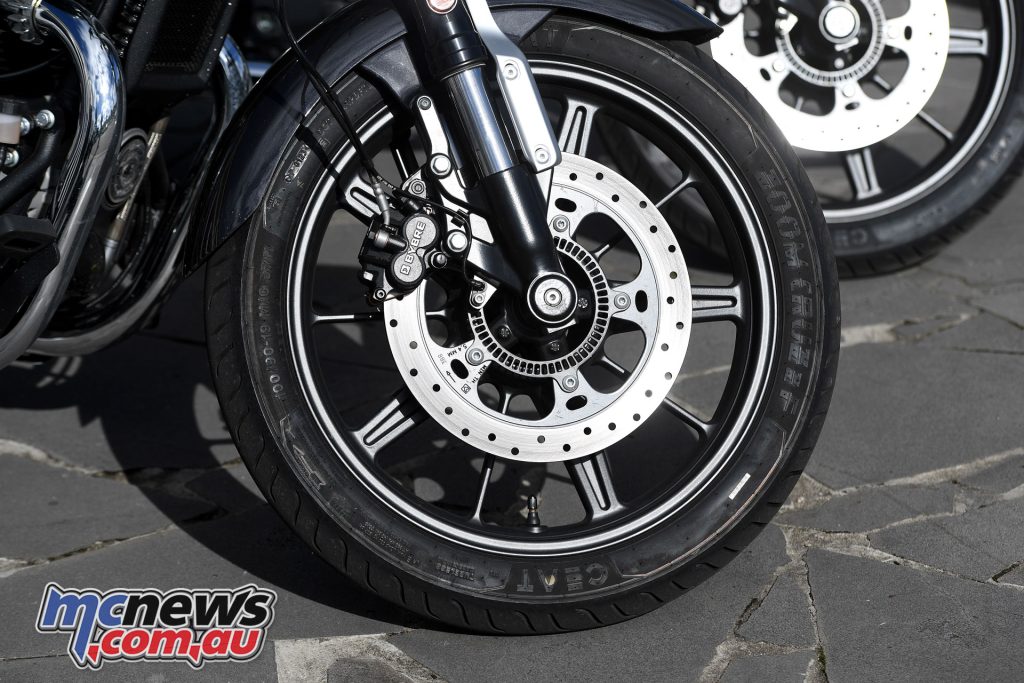
A bit of pressure at the rear brake foot lever revealed exceptional bite and power in comparison, with plenty of stopping power on hand. Again, more normal for a cruiser and a set-up I was very happy with, with the front helping into corners and for control, while the rear took care of actual stopping, and some combination of the two ensuring plenty of stop – by cruiser standards.
There’s ABS too, but even when things got slippery I didn’t note any activation, however with the majority of braking at the rear, I don’t doubt it’d come in handy when the weather takes a turn, or the unexpected happens. For new riders the more powerful brake at the rear will no doubt make it easier to lock up however the standard CEAT tyres were pretty good.
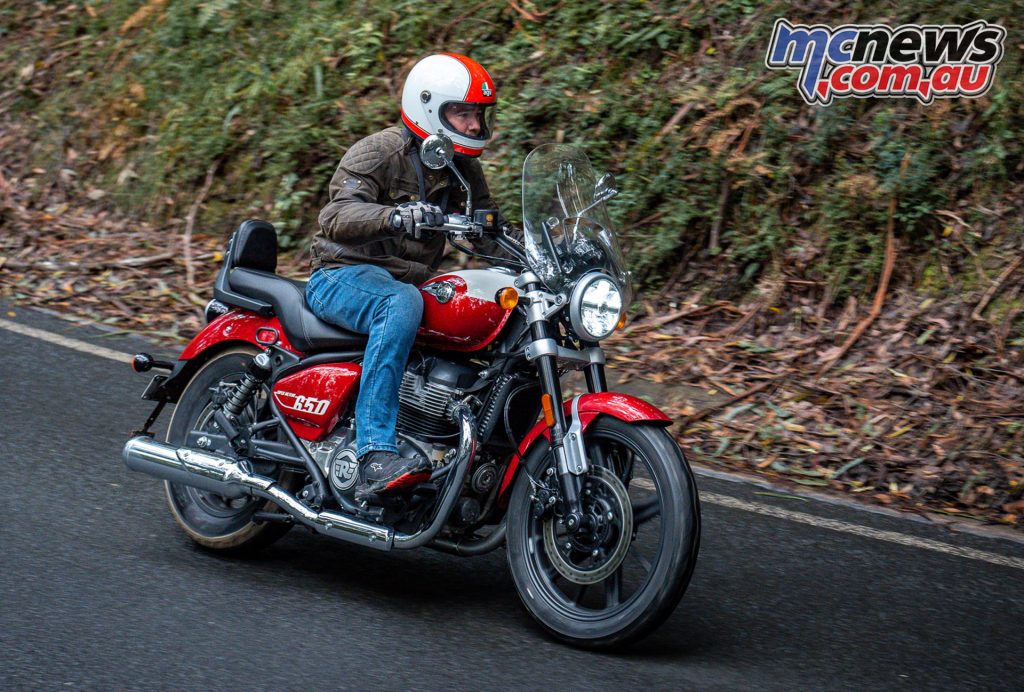
Cruising the coastal roads it was just a matter of holding momentum, maybe using a little front brake into the corners without really losing any speed and then rolling on out to take advantage of the torque on hand.
String those corners together, add a little engine braking occasionally into the mix from a downshift, and the Super Meteor really lived up to its segment moniker – just being exceptional at cruising.
Where around town you’re using the ‘bars a bit more, the bike is easily guided by body language here, and while you can add a bit of counter-steering, it really wasn’t necessary.
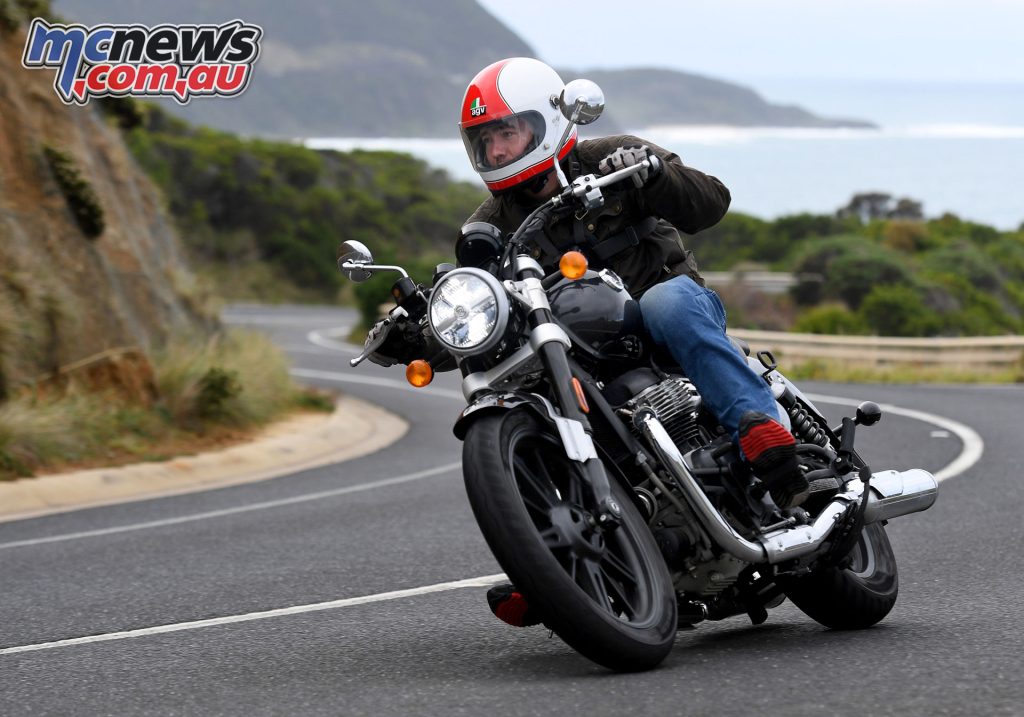
Flowing through the corners was fun, with the Super Meteor happily barrelling along with a bit of pace, gobbling up the corners with ease, without even a scraped footpeg. Ground and cornering clearance seemed generous for this category and it was only when I tried to carry a bit of extra lean angle to get a nice cornering shot for the photographer that I ever touched a boot down, somehow doing so before the ‘peg made contact.
Once we got away from the coast, we also had the opportunity to stretch the Super Meteors legs and at one point I saw 140 on the dash with more to give, however, the bike doesn’t have the performance of the 650 nakedbikes from Royal Enfield, and gets a bit flat from this point.
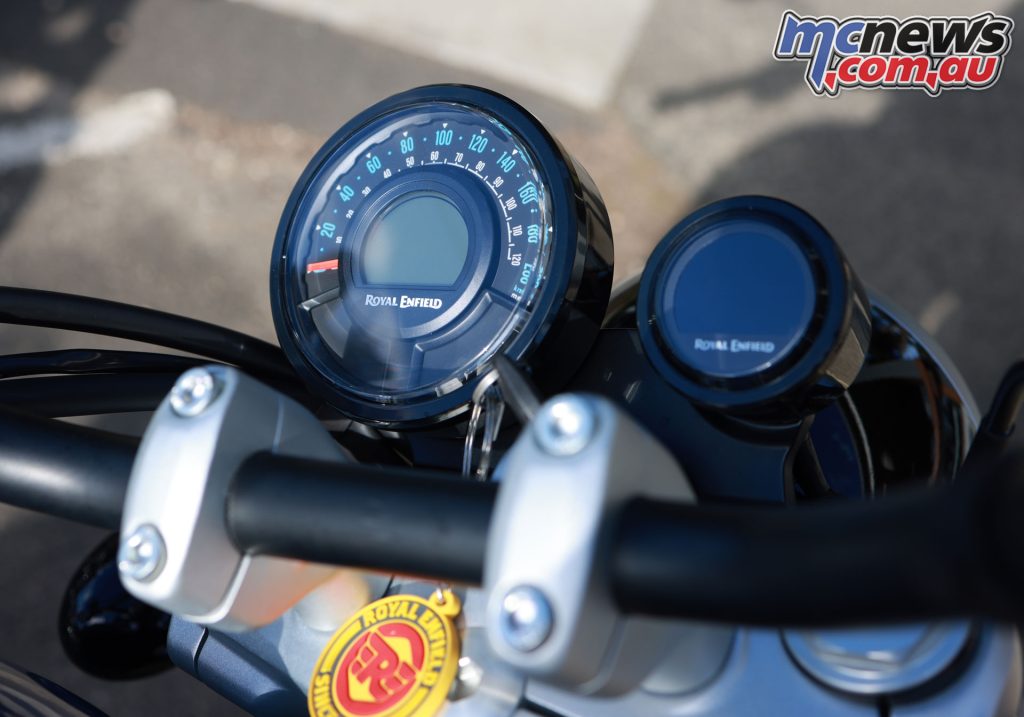
Is it lacking? No, I wouldn’t have said so, the 650 and mid-capacity cruiser class has never really been known for particularly noteworthy speed and I’d say the Super Meteor sits towards, if not at the top in that regard.
There’s even enough there for those riders who just want a capable mid-capacity cruiser, with good overtaking ability for the highway, which is a benchmark I always look for, and the Super Meteor does this effortlessly.
Obviously against larger machines – the more torquey V-twins in the unrestricted category – the Super Meteor will be lacking in the grunt department, but I have a strong feeling the handling will more than make up for that for many riders, with the engine still imparting enough character to earn its keep.
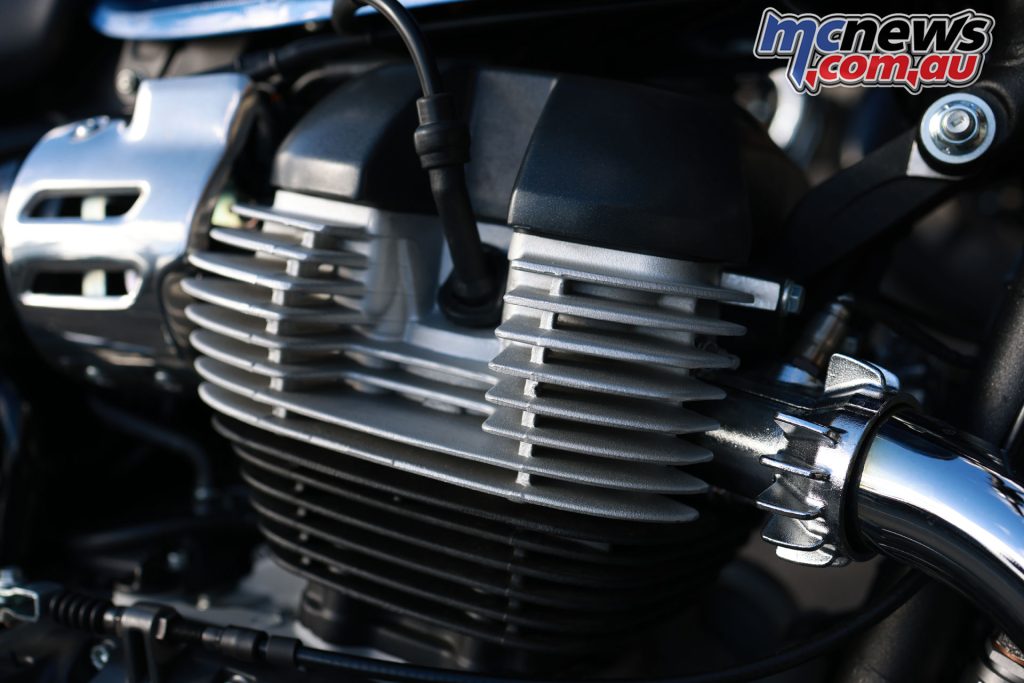
A set of aftermarket pipes wouldn’t go astray on the two-into-two system though, which seemed to have a bit of droop towards the rear of the bike. There’s enough sound track for those who like things quiet but characterful, but it could certainly be brought up in volume a bit.
Showa separate function forks feature up front, which are USD units that offer no adjustability. There are five steps of pre-load available on the dual shocks suspending the rear.
I started the ride on the mid-setting and was happy overall with the rear of the bike, which I’d say was above average for me at 75 kg or so, when we’re talking cruisers, and it sits in prety good standings with most road motorcycles at this price point.
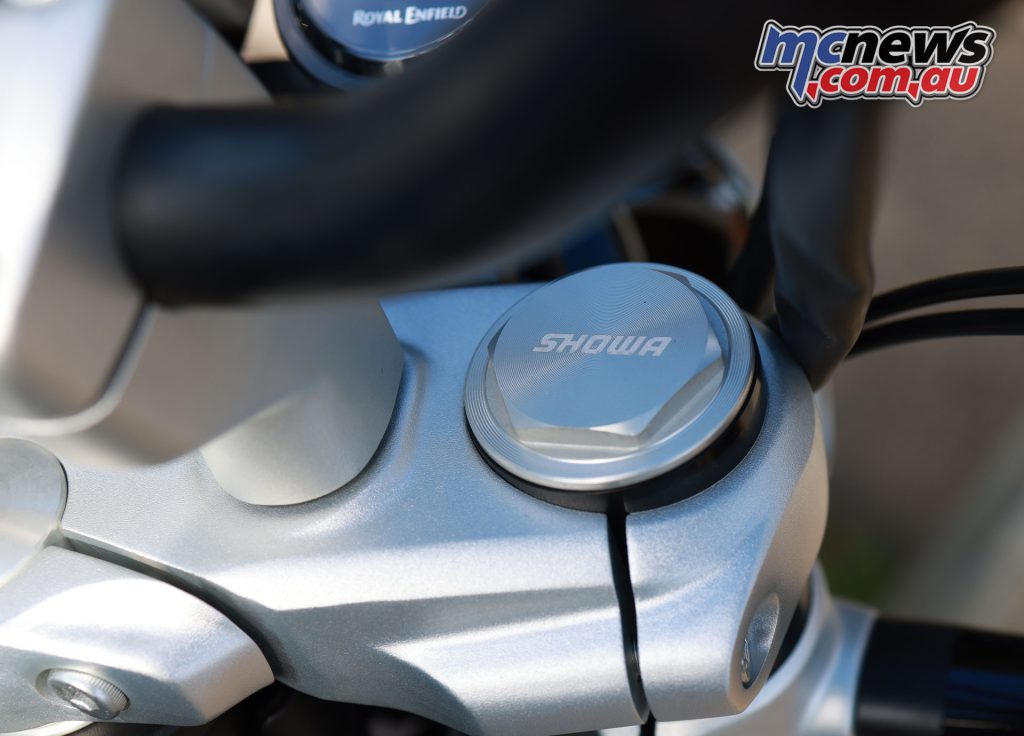
There was a nice blend of control and plushness over the harsher bumps, with only a handful of really bad hits truly getting the rear out of shape, or bumping me out of the seat.
Rear shock performance is often a weakness on cruisers, compounded by weight and often limited travel, but I thought the Super Meteor was well set up here, for my weight at least.
In all honestly I doubt I’d worry about changing the shocks myself, and would happily ride this bike on the daily commute. I might mess around with that pre-load a little if I owned one just to see what’s best, but I was pleasantly surprised, and shock performance is probably my most common complaint.
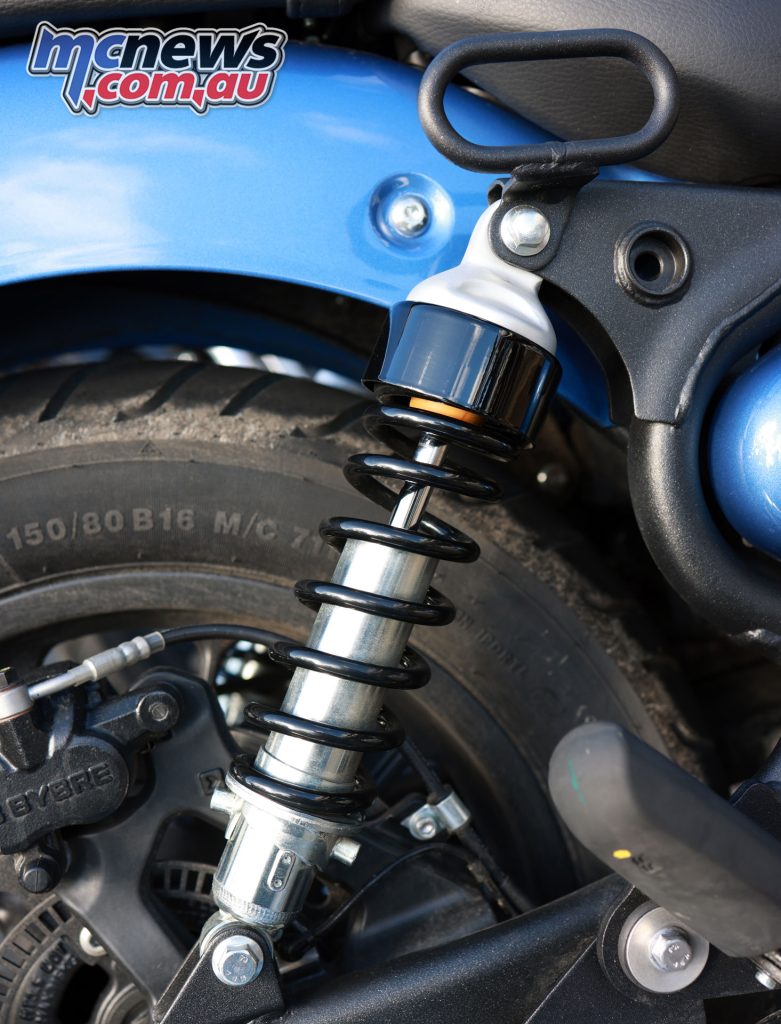
The CEAT tyres did the job, with no real complaints there, but seemed strongest in the dry, the bike runs a 19-inch front and 16-inch rear.
Another short ride the following morning with the sun up only furthered my appreciation of the bike, getting to enjoy some ideal relatively warm winter weather and amazing scenery along the coast, even if we did get stuck behind cars a few times.
Obviously cruising with a big group of other riders on similar machines is always going to add to the overall experience of a bike like this, but there’s no doubt in my mind that the Super Meteor will be the pride and joy of many new riders. I’d certainly be happy cruising on one, and taking it out of a weekend.
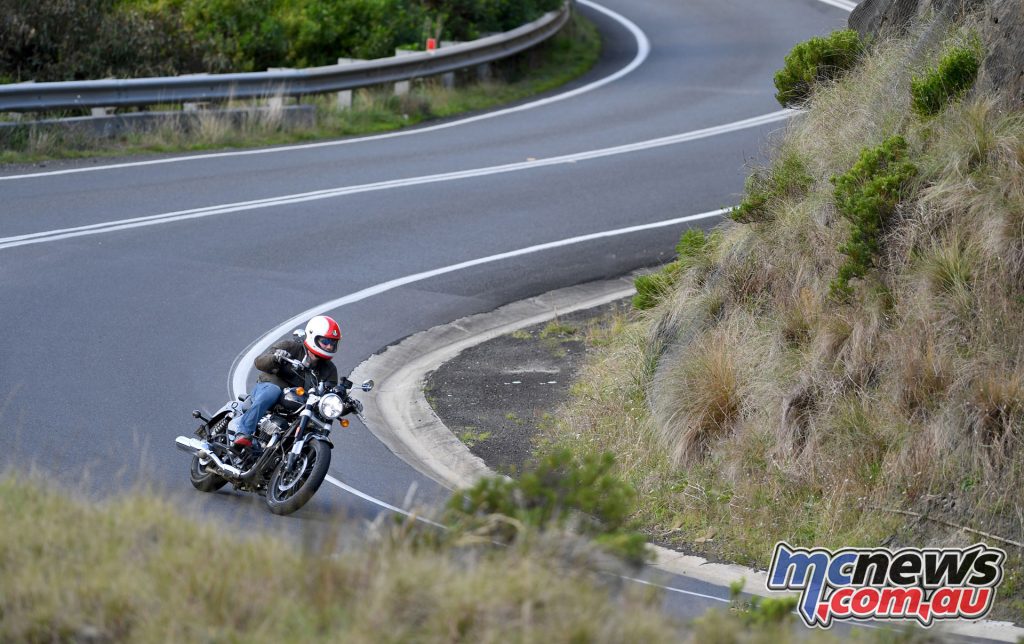
Looking over the bike, Royal Enfield have done a great job, keeping things relatively simple and traditional in a move likely to appeal to many cruiser riders, which combined with the price of entry creates a very attractive proposition.
The finish quality is good. Aan LED headlight, digital/analogue dash, billet switch-blocks and iconic styling, that’s both very cruiser and very Royal Enfield.
The analogue speedo on the dash didn’t do much for me to be honest, but it’s a small criticism, and a subjective one. The lack of a tachometer is not an issue, with the parallel-twin sportier than your typical cruiser. An even more traditional dash or dual clocks probably would have looked best to my eye, but people would no doubt complain about them not being digital these days.
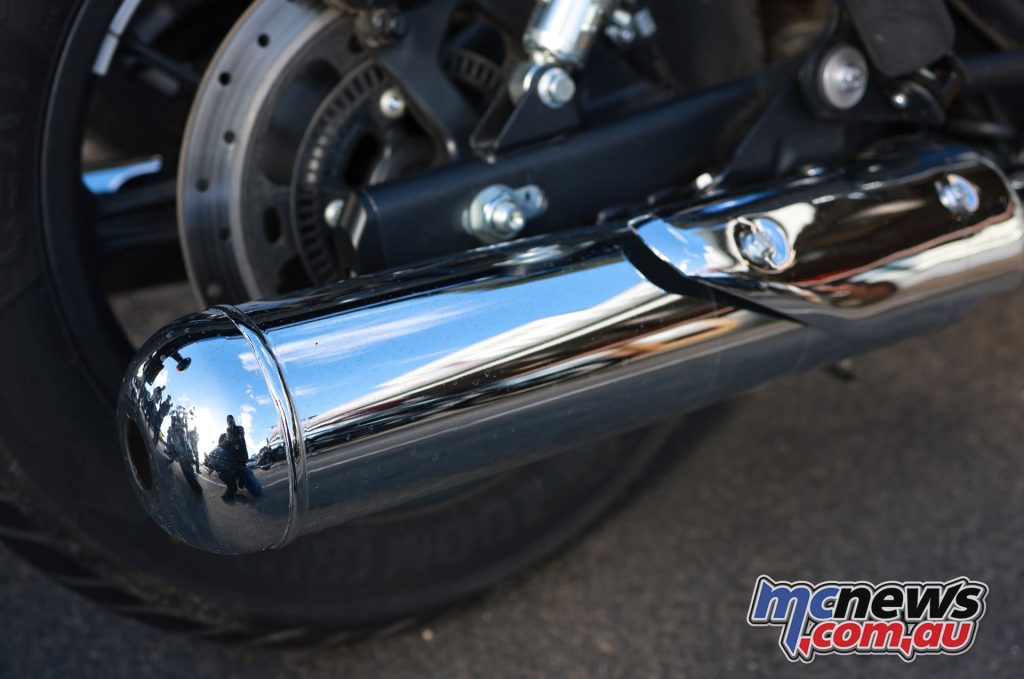
Foot controls are rubber clad, with adjustable levers on the ‘bars, and those levers are meatier as you’d expect on a cruiser. The mirror adjustment was good too, although you could throw on a set of bar-end mirrors from the accessories catalogue. Vibes weren’t something that intruded or became noteworthy either, even when revving the bike hard.
Specifications are pretty much what you’d expect, but I’d say the handling are the standout here for this category, backed by a solid and flexible engine, which is hard to fault, especially in a LAMS bike.
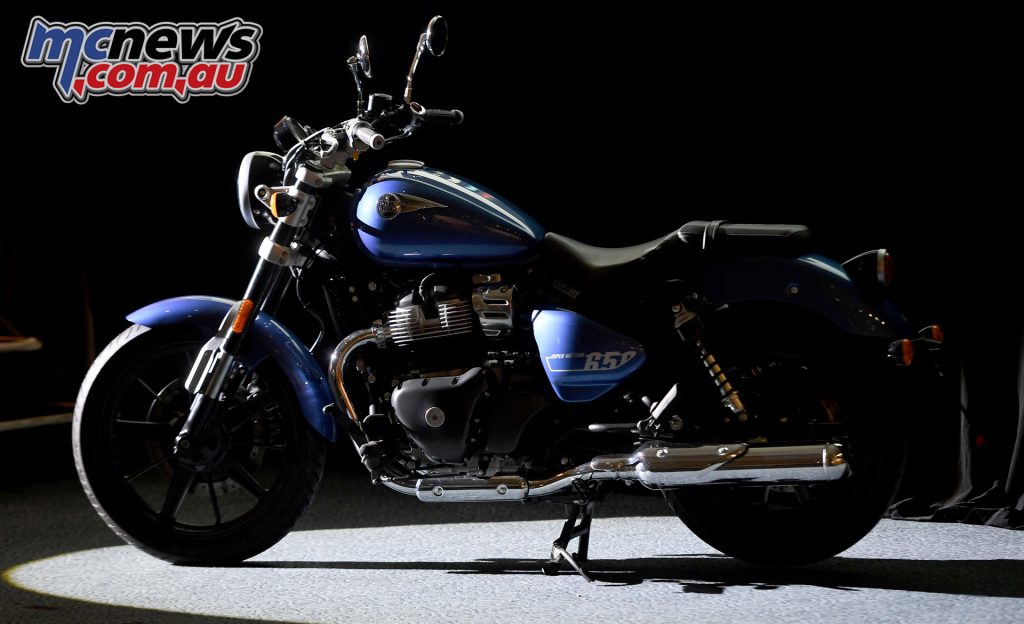
Overall the Royal Enfield Super Meteor strikes me as an amazing option, they’ll have to win riders over to the parallel-twin if they’d set their sights on a V-twin, and of course to their brand.
I wonder if we’ll see a Himalayan 650 next…
‘Touring’ Super Meteor
I also spent some time on the ‘Touring’ version, which adds the accessory touring screen and touring seat, but in all honesty I preferred the base version.
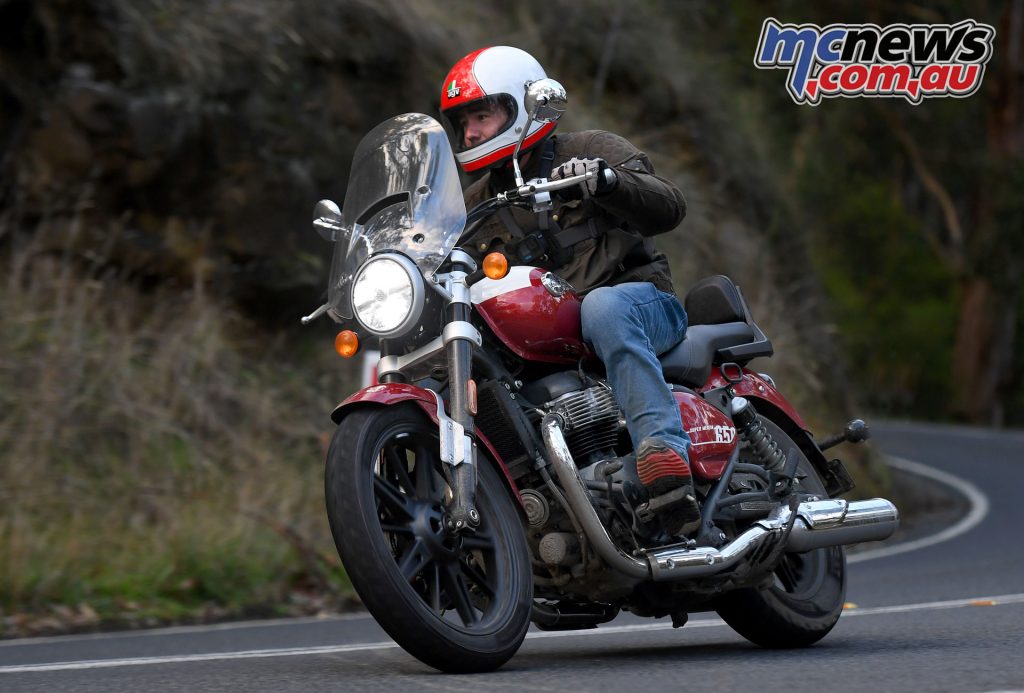
This isn’t a true, individual model variant either, but instead an accessory pack essentially, that just covers some touring basics.
The screen actually introduced quite a bit of helmet buffeting due to having a vent just above the dash, with my height and helmet also coming into the mix, so while the reduced overall wind was good, it was a mixed bag with the buffeting.
The standard seat also worked really well for me, so I didn’t notice a big improvement between that and the touring seat, although some of the other riders did.
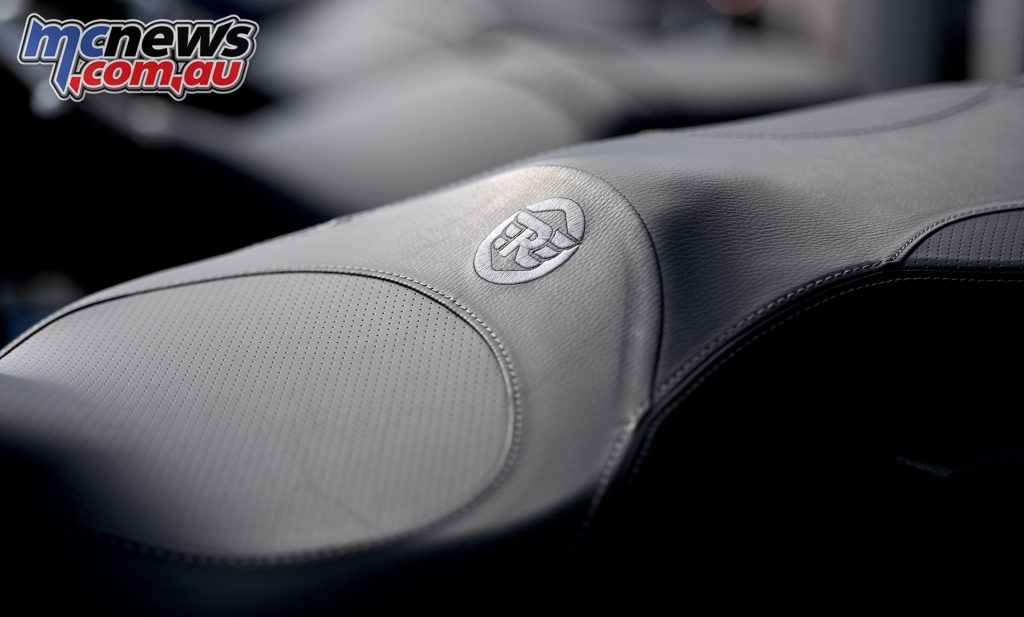
I think the Touring version may also have had the different ‘bar setup as it seemed to run the taller bars, which was a difference that I soon forgot about.
There’s a host of genuine accessories available in that arena though, so you should be well covered for the popular stuff, with aftermarket options no doubt soon to join the mix.
LAMS Cruiser Competition
The ranks of the beginner cruiser segment has shrunk in recent years with the remaining options consisting of the Honda CMX500 which is a willing performer and arguably the Super Meteor’s closest competitor. Then there is the more modern Kawasaki Vulcan S and Benelli 502C.
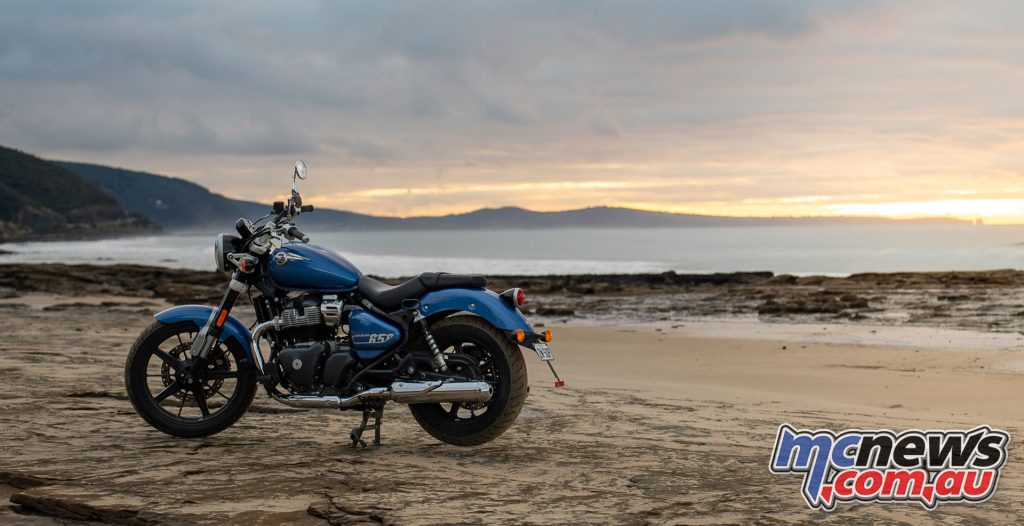
Harley’s Street 500 is gone and would have been significantly outclassed by the Super Meteor if it were still on sale now. Those 500s look pretty overpriced second-hand too, although the second-hand market is bonkers in general right now.
The Yamaha XVS 650 or V-Star would likewise have had a hard time competing too, and would have shown its age in comparison to Royal Enfield’s latest, much like the Suzuki Boulevard S40, although both have been solid choices for years.
Of the remaining contenders, the Vulcan S is undoubtedly a modern machine, like the 502C, so I’m not really sure how much overlap there truly is there, or whether riders would even compare them directly. The Kawasaki sits on almost the same price-point though, which may well be a contributing factor to where the Royal Enfield landed, price-wise.
The Honda CMX500 or Rebel 500 as it’s known elsewhere is a little more traditional from a styling perspective and matches the Super Meteor on power but not torque and offers an even lower seat height, which may be a boon to some shorter riders, alongside a lighter weight. Pricing is also a bit lower too, which goes in its favour, but I’m not sure it has the presence of the Royal Enfield, especially for those who want a traditional cruiser.
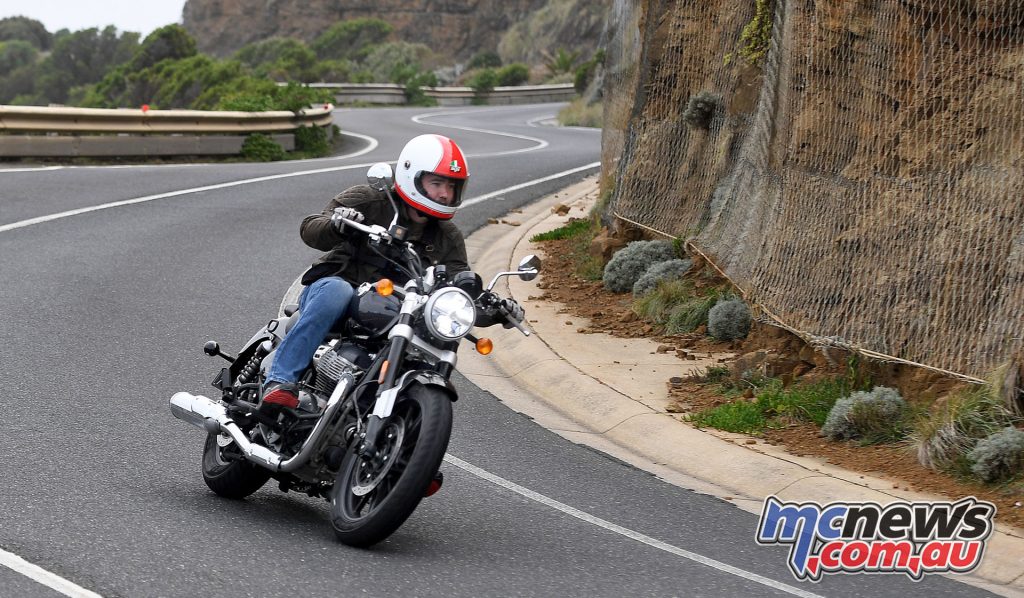
Overall the Super Meteor 650 is well placed to take the lower capacity cruiser market by storm. Authentic styling, strong finish quality, good performance both engine-wise and chassis-wise, with a competitive price make for an enticing package for those looking for this style of machine.
2023 Royal Enfield Super Meteor 650 Video Review
2023 Royal Enfield Super Meteor 650 Specifications
| 2023 Royal Enfield Super Meteor 650 Specifications | |
| Engine | |
| Type | Parallel twin, 4 stroke, SOHC, Air-Oil Cooled |
| Displacement | 648cc |
| Bore x stroke | 78 mm x 67.8 mm |
| Compression | Ratio 9.5 : 1 |
| Maximum Power | 34.6 kW (47PS) @7250 rpm |
| Maximum Torque | 52.3 Nm @5650 rpm |
| Clutch | Wet, multi-plate |
| Gearbox | 6 Speed constant mesh |
| Fuel Supply | Electronic Fuel Injection |
| Air Cleaner | Paper element |
| Engine Start | Electric |
| Chassis & Suspension | |
| Type | Steel Tubular Spine Frame |
| Front suspension | 43mm Upside Down Telescopic Fork, 120mm travel |
| Rear suspension | Twin Shocks, 101mm travel, preload adjustable |
| Electricals | |
| Battery | 12 volt, 12 Ah, VRLA |
| Head Lamp | FPL 1.55 W LED |
| Tail Lamp | 2.5 W, LED |
| Charging Port | USB 2.0 Type A – 5V 2A Output |
| Dimensions | |
| Wheelbase | 1500 mm |
| Ground Clearance | 135 mm |
| Length | 2260 mm |
| Width | 890 mm (without mirrors) |
| Height | 1155 mm |
| Seat Height | 740 mm |
| Kerb Weight | 241 kg (with 90% fuel & oil) |
| Fuel Capacity | 15.7 litres |
| Brakes & Tyres | |
| Tyres Fr. | 100/90 – 19 M/C 57H (Tubeless Type) |
| Tyres Rr. | 150/80 B16 M/C 71H (Tubeless Type) |
| Brakes Front | Single 320mm disc, twin piston floating caliper |
| Brakes Rear | Single 300mm disc, twin piston floating caliper |
| ABS | Dual Channel |
Images courtesy of Royal Enfield, by Jeff Crow, Matthew Hayman, Tom Fossati
















































